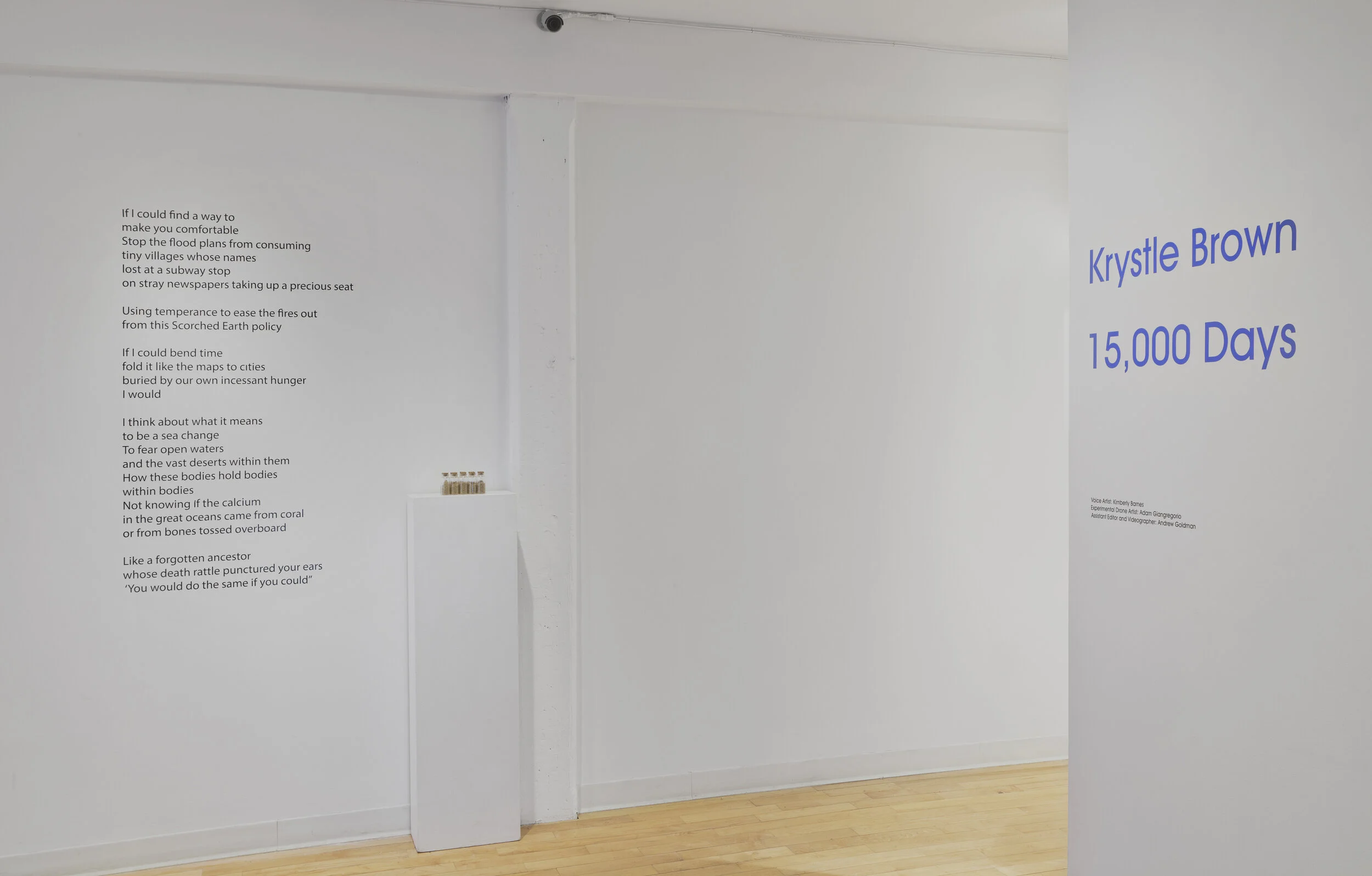
15,000 Days
This work started with a poem that I wrote in 2017 titled “15,000 Days”. My father’s life was fading before my eyes, and my instincts were telling me that he was not long for this world. I began reflecting upon this strange passage of time. We can perceive time as elastic, how slow our lives unfold, but a day can escape us. During that summer, I read countless news articles about the amount of time humanity had until climate change damage was deemed irrevocable. Some publications listed fifteen years, others as many as forty, of when this damage will be complete.
I thought about this elastic time and how complacency develops when years are set into distant futures. I have always found it strange that we can almost manipulate time by describing it. Many days seem attainable; a set of years can feel like an eternity. After writing this poem, I thought about my father in his hospital bed, the last time I saw him alive. It felt like I could have all the time in the world with him, but I only had a series of days. Fifteen thousand days is a little over 40 years.
For “15,000 Days”, I filmed, edited, and installed a three-channel video with constructed sound design. The installation is in Center Gallery; each channel is viewed on a TV monitor. Each monitor is placed on the floor next to each other to achieve a panorama-like effect. Visually, the video will comprise of a person digging into the earth along a beach off of Peaks Island, Maine, with edits of the person filling and removing soil from the hole in an apparent time standstill, a motif used in my previous projects.
The sound component features Kimberly Barnes reciting the poem that delves into the world’s future mired in the unfolding climate catastrophe, mixed with the filming environment’s ambient sounds. Added into the poem and ambient sounds is experimental drone music by Adam Giangregorio. This music was created at Battery Steele on Peaks Island.
The use of three channels and the footage within them will lead the viewer through ritual-like use of repetition. Up-close shots of the act of shoveling the soil signify the impact of climate change on the lower economic class physical labor, akin to a gravedigger. “15,000 Days” seeks to contend with a contemporary hauntological perspective through the setting of a serene beach with the jarring juxtaposition of the act of digging a “grave” coupled with the installation of such work within the white cube of a gallery. A grave’s digging invites the viewer to ask who the grave is for; a loved one, a stranger, yourself. Rather than assume all is lost, there is room for cautious hope. Viewers can leave the gallery taking a bottle of sand (this is explained below).
In addition to the video, viewers can choose to sit in an altered beach chair, one that feels both familiar yet strangely off-putting because of both its presentation and the fact it is now out of context in a gallery and conversation with this particular work. Upon leaving, there will be a shelf of glass bottles capped with cork. Inside will be sand from Peaks Island; the same sand found deep within the grave (the soil/sand on top was very rocky). The bottles relate to the glass bottle that is buried/exhumed in the video. Viewers can take a bottle for free to do with as they please. Perhaps this is the symbol of hope, no matter how small, that I hope to achieve. The future is not yet determined. We may have buried our dead, but we have not buried ourselves.


15,000 Days Installation View
Installation View in Center Gallery. Kingston Gallery. Boston
Photo by Will Howcroft

15,000 Days Installation View
Installation View in Center Gallery. Kingston Gallery. Boston
Photo by Will Howcroft

15,000 Days Installation View
Installation View in Center Gallery. Kingston Gallery. Boston
Photo by Will Howcroft

15,000 Days Installation View
Installation View (Lights Out) in Center Gallery. Kingston Gallery. Boston
Photo by Will Howcroft

Installation View
Installation View in Center Gallery. Kingston Gallery. Boston
Photo by Will Howcroft






